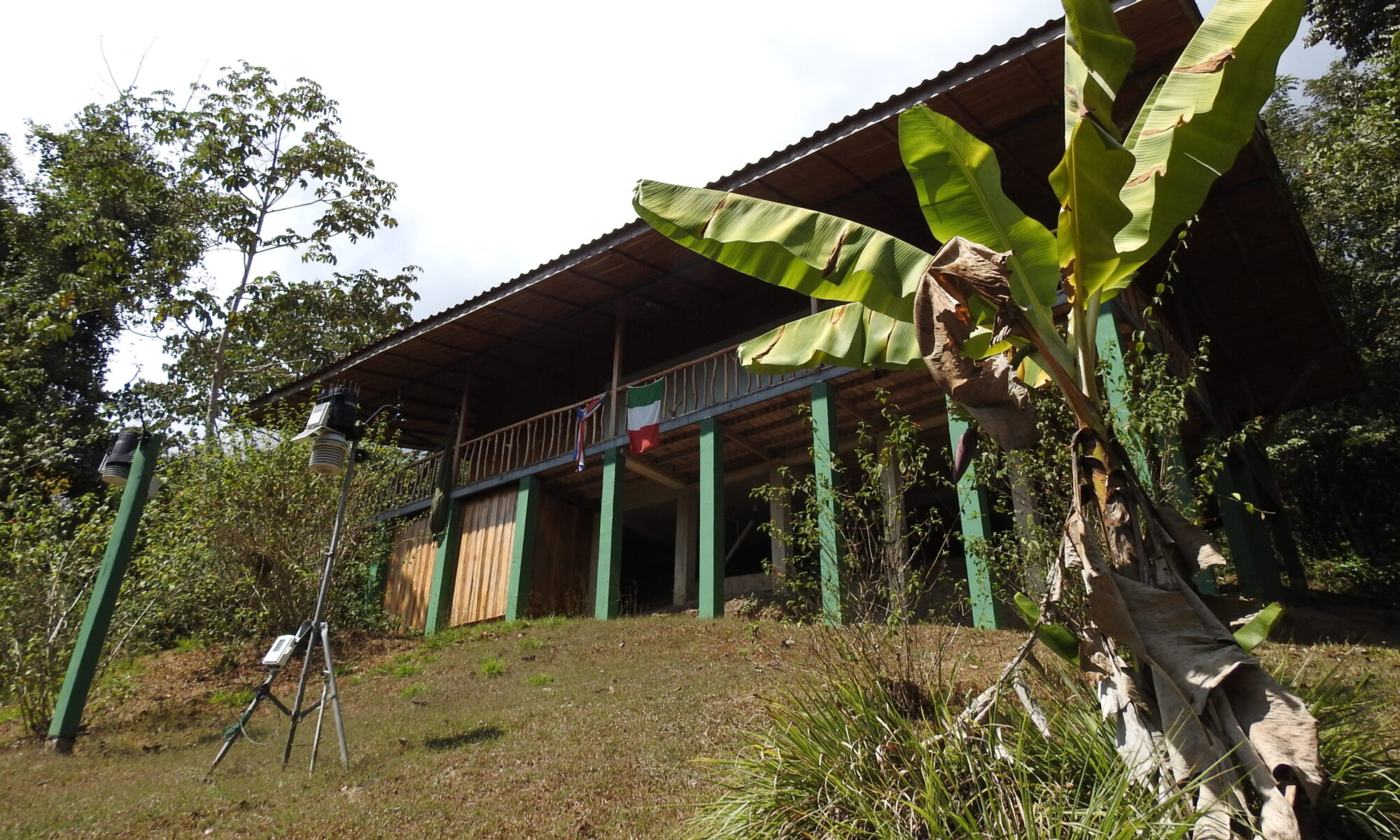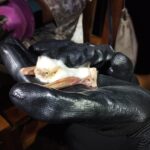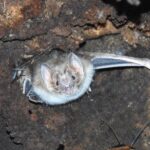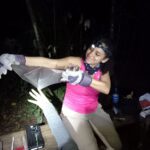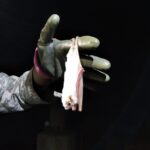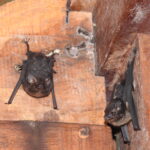We had the chance to participate in a bat monitoring activity at the Karen Mogensen Reserve, the Conteo Navideño de Murciélagos (Christmas bat census), which took place simultaneously in several parks and reserves of Costa Rica with researchers and students of the University of Costa Rica and some associations involved in Central American bat conservation.
Their conservation concerns us particularly, because many bat species are important pollinators and seed dispersers, se they are essential for the growth of a healthy forest and a valid aid in reforestation too.
During two consecutive nights mistnets were used, the same type used for bird monitoring and ringing, some of these provided by our Research Station “Italy – Costa Rica”, which gave effective support to these activities. These nets are used for the scientific purpose to collect bats or birds in an absolutely harmless way for the animals. They have been positioned ad hoc in the various forest environments of the Reserve and the captured animals have been identified and released immediately. The only way to correctly identify a species is to manipulate the animal and take some biometric measures, verifying the presence/absence of diagnostic morphological characters, for example tail length, presence of uropatagium (membrane connecting the hind legs to the tail, acting like an extension of the wings), shape of the ears, nose and teeth. In handling the specimens, the state of health and the presence of ectoparasites were also analyzed.
At the end of the two nights, 11 species were identified, including the beautiful and rare ghost bat or white bat (Diclidurus albus), already the flagship species of the Reserve and present in the logo of our Research Station.
In addition, the common vampire Desmodus rotundus was found(the real vampire that feeds on blood!) with several individuals captured, and even the false vampire or spectral bat (Vampyrum spectrum).
The latter is undoubtedly the most interesting species found, both because it is the largest living bat in the Americas (with a wingspan of one meter!), and because it is considered a top predator, a voracious predator that can feed on birds the size of a blackbird, and also because it is classified by the IUCN in the conservation category Near Threatened, that is, an animal whose conservation is close to being threatened. Ultimately, the captured specimen was a lactating adult female, so presumably this species is breeding inside the Reserve.
All this information tells us that the bat community of the Karen Mogensen Reserve is in excellent condition, and that equally excellent is the work that the Reserve and all our supporters are carrying on by preserving these habitats with our projects. So, from us and from the bats of Reserva Karen, thanks to everyone who supports us!
